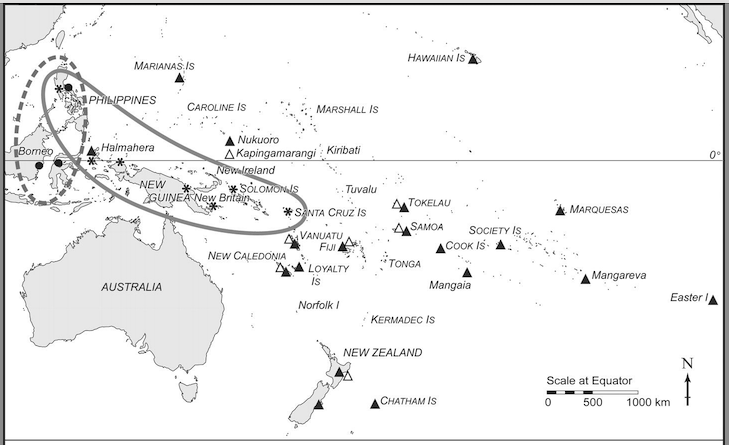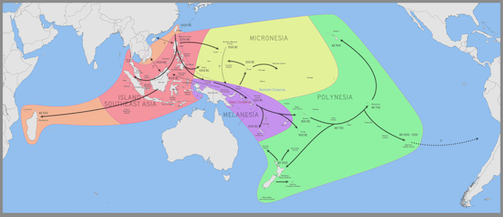Researchers at Auckland University have conducted an extensive study on the Polynesian rat, also known as the kiore. This study involved a detailed comparison of the kiore's genetic makeup with that of the Halmahera rat.
The research provides insights into the evolution of island rats, highlighting the unique characteristics of these rodents. It also offers clues about their possible origins.
The kiore occupies a significant place in Polynesian history and culture. Having accompanied Polynesian voyagers on their extensive Pacific expeditions and settling on numerous islands. However, its ecological impact has been mixed, serving both as a predator and a seed disperser.
Understanding the kiore's genetic structure is crucial. By examining its adaptation to island environments and interactions with other species, we can better understand its evolutionary path. This 12-year study utilized advanced genetic research techniques, including DNA sequencing and analysis.
The study's primary aim was to explore the kiore's genome, examining its genetic diversity, population structure, and evolutionary history. The findings reveal a significant genetic link between the kiore and the Halmahera rat. A fact of particular interest since Halmahera would have served as a stop for Maori Polynesian voyagers. Before they commenced their Pacific explorations.
The Halmahera Theory: Unraveling the History of Pacific Islands
The Halmahera theory is a compelling alternative to existing models. It highlights the need for more research. Which could help reveal more history of the Pacific Islands and its diverse people.
How the Halmahera Theory can Benefit Our Understanding
Reframing the Polynesian Migration: The Halmahera theory questions the widely accepted theory that Polynesians originated from Taiwan 3000 BC. It suggests a more complex migration pattern with various starting points and stops along the way.
Unveiling Cultural Exchange: The Halmahera theory brings to light possible interactions and cultural exchange between Polynesian voyagers and the inhabitants of Halmahera. Was the interaction of mutual benefit in knowledge, technology and culture? On the other hand, history often shows that interactions between different cultures can also lead to conflict.
Understanding these interactions can give us insights into Maori evolution as they spread across the Pacific. To provide a temporary context for this interaction, the Maori presence in this region endured for approximately 2200 years. According to current estimates.
Exploring Diversity: The inclusion of Halmahera in the Polynesian migration narrative. Highlights more diverse origins and cultural backgrounds of the people who settled the Pacific Islands. It adds depth and complexity to Pacific Islander identities.
Guiding Academic Research: The Halmahera theory can help steer future archaeological investigations by identifying new locations and timeframes to focus on. This targeted research can lead to the discovery of new sites and artifacts. Further raising our understanding of Polynesian history and culture.
Inspiring Future Generations: Exploring the Halmahera theory can ignite a passion for scientific inquiry and cultural exploration in future generations. By looking into the past. We can develop a deeper appreciation for our shared human heritage and the remarkable achievements of our ancestors.
Continued research into the Halmahera theory will contribute to a better understanding of the complexities of Polynesian migration, Polynesian language, and the Lapita culture. It is an exciting avenue for exploration. That promises to expand our knowledge of the Pacific Islands and its people
South China Taiwan
Moreover, recent genetic research by Dang Liu et al. (2023) suggests an even earlier chapter in the Maori story. Their findings indicate evidence of both "In-to-Taiwan" and "Out-of-Taiwan" movements in the South China Sea. Suggesting a potential homeland in mainland south China before the migration to Taiwan, Halmahera, and the Polynesian triangle.
A new layer of complexity to understanding Maori origins. This discovery introduces a new layer of complexity to understanding Maori origins. Indicating a potentially multi-stage migration process with multiple ancestral homelands and intermediary stops.
Further research is essential. As this is an emerging field, further research is essential to comprehend the timeline and routes of these early movements.
Investigating archaeological sites. It is crucial to investigate archaeological sites and analyse additional genetic data from across Southeast Asia and mainland China.
Possible scenarios arising from this evidence include the origin of Maori ancestors in mainland China. Migrating to Taiwan while interacting with local populations. Spending some time in Halmahera, the migration east followed by the final voyage to New Zealand. Also, multiple waves of migration from different regions at different times could have occurred.
Emphasising the significance of the Halmahera theory & Maori origins. While acknowledging the potential earlier Chinese homeland, it is also important to continue emphasising the significance of the Halmahera theory in understanding Maori origins.
The genetic link between the Kiore in New Zealand and Halmahera. Provides strong evidence of a staging ground on Halmahera during the Polynesian migration east.
The Maori people have a rich culture and a strong tradition of telling stories. People have shared these stories from one generation to the next. One interesting story is about Hawaiki, a special place in Maori myths.
The real location of Hawaiki is unknown, but some experts think it might be in East Asia or Southeast Asia. This mystery adds an element of intrigue to this ancient story.


